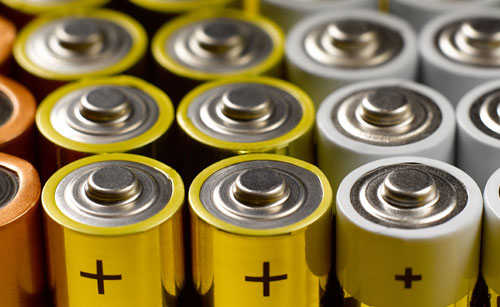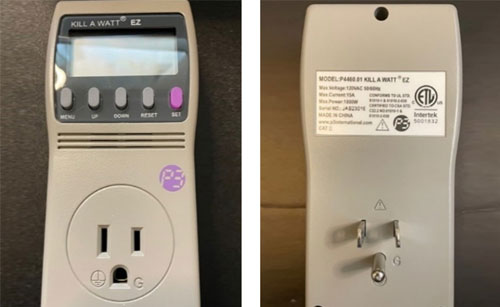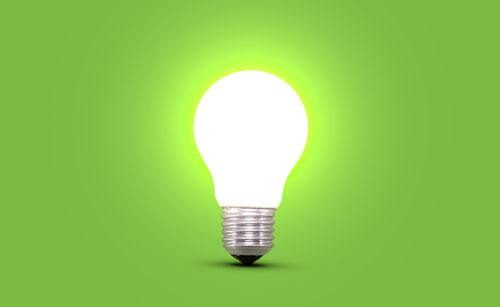Instructions
Ready to get started with this activity? To keep track of your progress, check off the instructions for each step below as they are completed. Make sure to check the box of the last step when you’re done to receive congratulations for your completed activity!
Consider this:
When it comes to magnetic charges, we know that when like charges are near each other they repel, and opposite charges attract. In this activity, the aluminum foil will let you know if the charge near your electroscope is the same or the opposite by the position of the aluminum strips. If the strips hang down, the item near your electroscope has the same charge as the item. If the strips stand straight out, the item has the opposite charge and the strips are attracted to it.
- (1) Empty, dry can
- Electrical tape
- (1) Styrofoam cup
- Aluminum foil
- Scissors
- Balloon
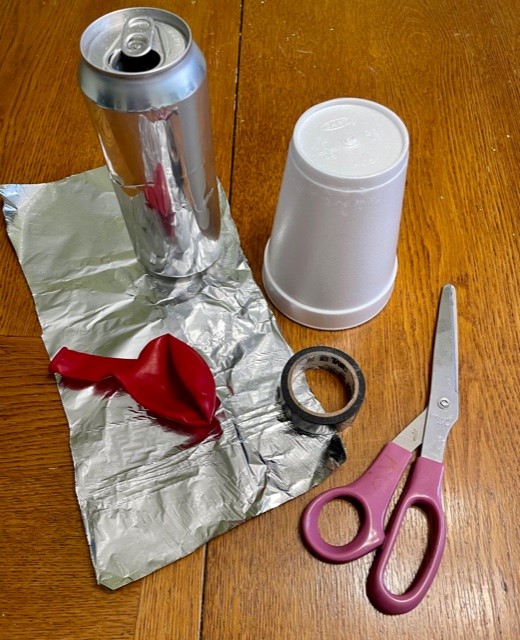
- Turn the cup upside down so the opening is facing down.
- Carefully push the can’s tab into the opening so it is standing straight up and down.
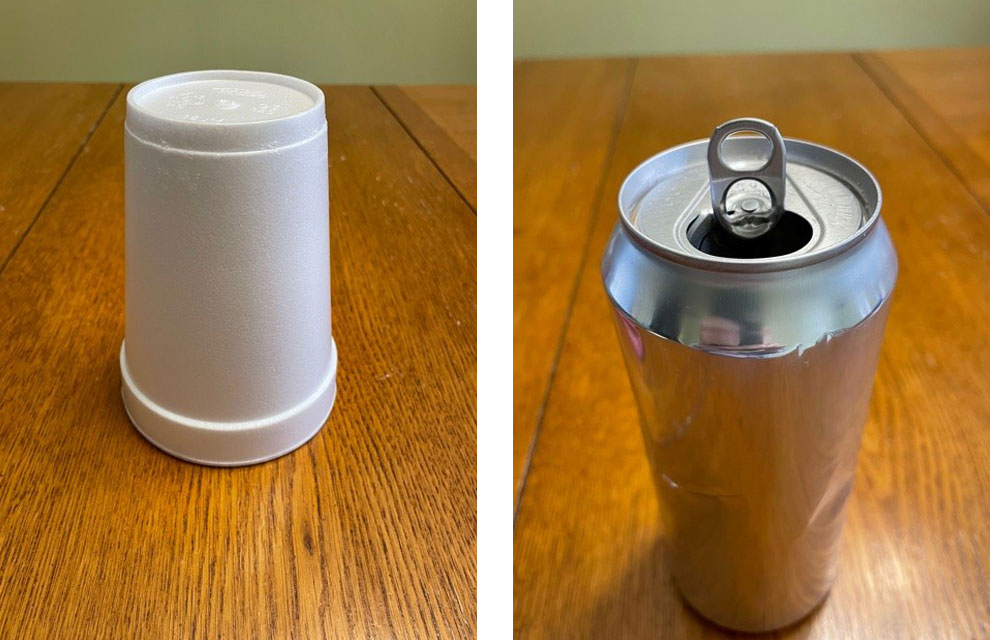
- Turn the can on its side, placing it on the top of the cup.
- Use the electrical tape to secure the can to the cup.

- Use the scissors to cut two small strips of aluminum. The strips should not be wider than a shoelace and no longer than your pinky finger.
- Twist one end of the aluminum strip into a hook.
- Hook the aluminum foil strips into the can tab.
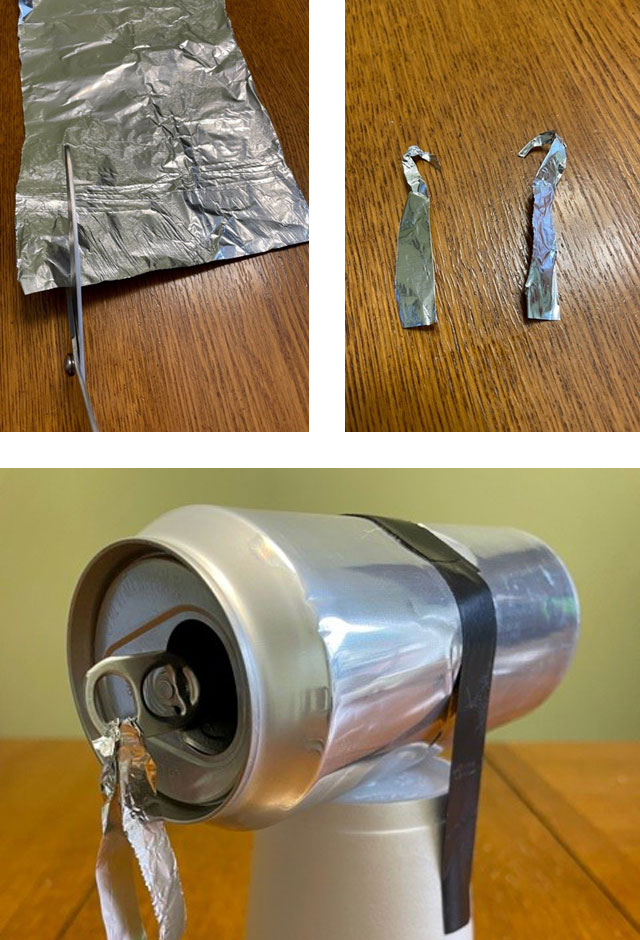
- Blow up the balloon and rub it on your hair.
- Hold the balloon near the aluminum foil strips. What happens?
- Hold the electroscope near your television. What happens?
- What happens if there is moisture in the can?
- Does changing the thickness of the aluminum foil strips, by folding them, making them longer, change the outcome?
- Can the soda can sit on top of a different container? What about glass, or plastic? Does metal change the outcome?
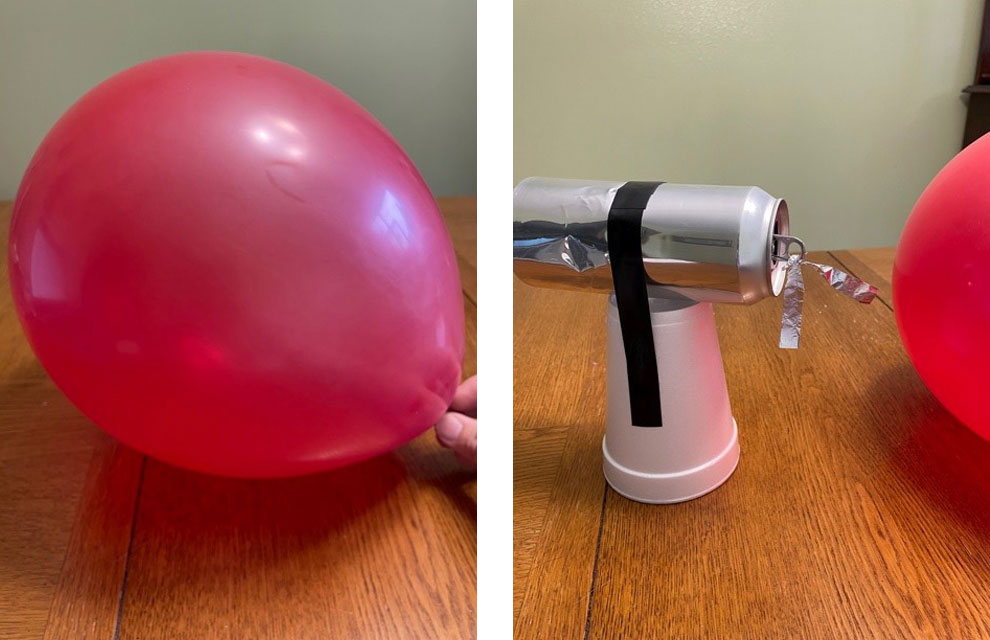
- The first electroscope was built in 1787 William Gilbert.
- There are three types of electroscopes: pith-ball, gold-leaf and needle.
- An electroscope can only give an indication of the quantity of charged particles – it is not exact.



